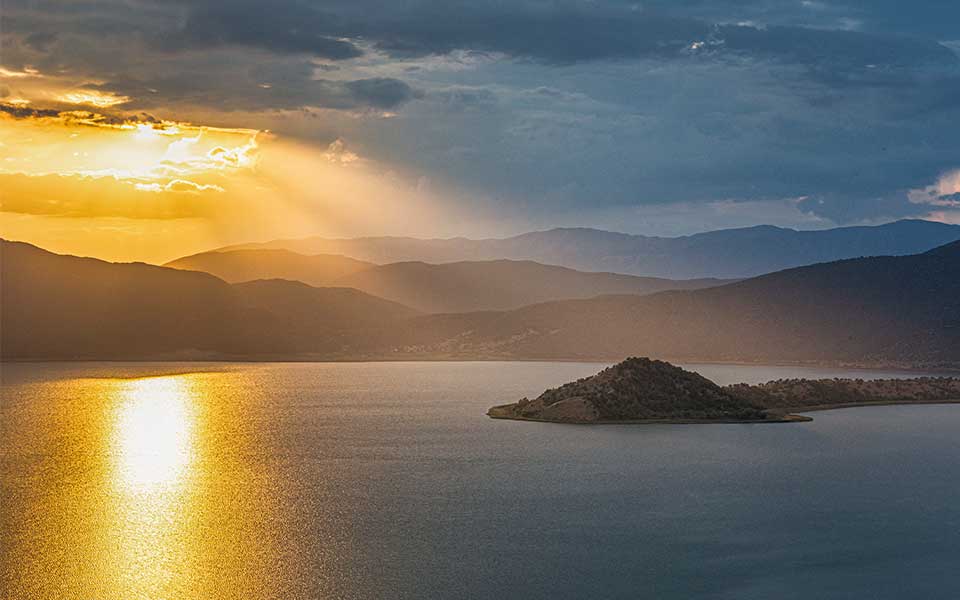As the sun rises from behind the mountains, its light reflects on the waters of the “twin” lakes in Prespes National Park, on Greece’s highland border with North Macedonia and Albania, offering a most majestic sight. Flocks of Dalmatian pelicans, pygmy cormorants, cranes, and other birds flutter from their nesting sites to the reed beds in their daily search for food.
Bears, wolves and chamois roam freely in their own realm, the surrounding verdant slopes, while on the plains below, the local inhabitants go about their daily activities, which primarily involve agriculture, fishing, and hospitality. People, birds, wild animals, and rare flora coexist harmoniously in this mountainous region of Greece. The Prespes basin, acclaimed as one of Europe’s most important and beautiful wetlands and protected under the Ramsar Convention, is internationally renowned for its rich fauna and flora. More than 260 species of migratory birds, over 40 species of mammals, 20 species of reptiles and 15 species of freshwater fish make this a unique wildlife sanctuary.
Nature has endowed the rugged Greek mountainous terrain surrounding Florina and Kastoria with two “sister” lakes, Megali (Great) Prespa and Mikri (Little) Prespa, which, according to scientists, were once joined, not unlike conjoined twins, but in the course of geological time became separated. Meanwhile, geopolitical developments divided the lakes among three countries – Greece, North Macedonia and Albania – to form what is today a tri-national meeting place of Balkan cultures.
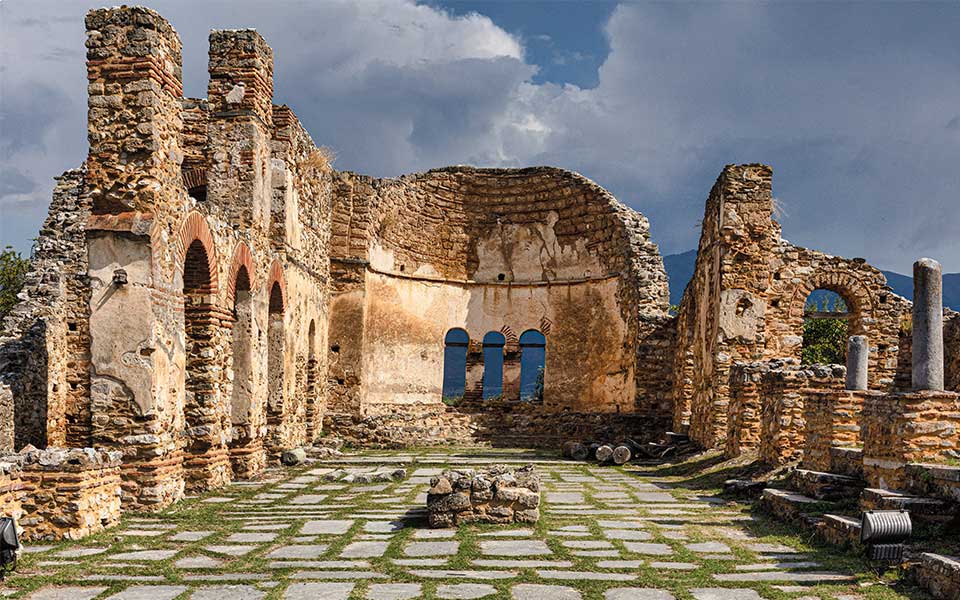
© Perikles Merakos
As the post-war Balkan map has been shaped, most of Megali Prespa now belongs to North Macedonia, with smaller areas in Greece and Albania. The latter two countries share Mikri Prespa, with the greater part of it lying in Greek territory.
Nature lovers from all over the world converge on Prespes to study the daily lives of the birds or the rare flowers and plants, and to witness the splendor of the lakes firsthand and experience the magic and tranquility of the landscape. One can see people perched for hours on hillsides, using binoculars and drones to observe the flocks of birds flying overhead in symmetrical formations or “patrolling” the waters of the lakes in boats to take photos of nests among the reeds.
The approximately 1,300 inhabitants of the 19 picturesque Prespes villages protect the birds, now viewing them as fellow villagers, taking great care not to frighten them or damage their nests among the reeds and bean plants, not even by mistake. Apart from the celebrated Prespes beans, the product that has traditionally supported the local economy, bird tourism provides a significant source of income. “We look after the birds. We try not to disturb them so that they have the quiet and the food they need because they, in turn, ‘feed’ us by attracting tourism,” says Lazaros Petridis from the village of Platy.
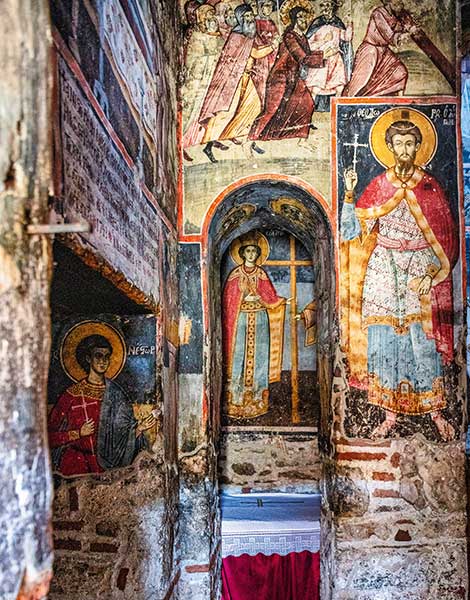
© Perikles Merakos
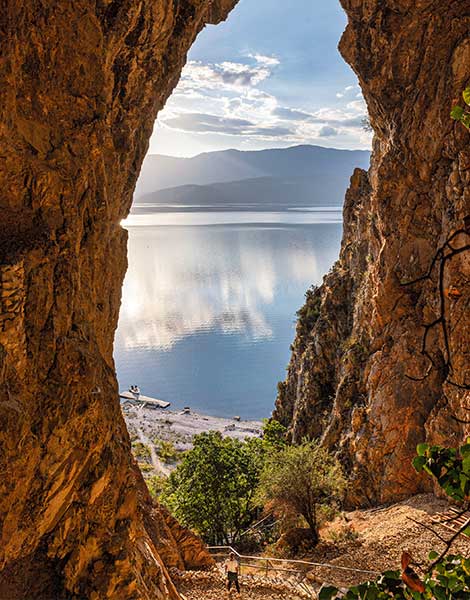
© Perikles Merakos
In villages such as Laimos, Psarades, Aghios Germanos, Mikrolimni, Lefkona and Karya, there are charming guesthouses, tavernas, and stores with traditional delicacies and local products, as well as offices providing visitors with information about the natural paradise that is Prespes. Today, everything revolves around respect for nature. But this has not always been the case.
For centuries, along the shores of the lakes, humans struggled for dominion over nature to earn their livelihood. When, in the early 1980s, the first environmental organizations arrived and spoke about the need to protect the ecosystem, the locals believed that, in effect, they were being asked to sacrifice themselves for the sake of “birds and flowers.” They adopted an almost hostile approach to anyone struggling to convince them that they could coexist with the fauna and flora, viewing them with mistrust and contempt. Today, they have many stories to tell about their everyday conflict with the “ecologists,” including this one: in the mid-1980s, at a village close to the lake, a traditional wedding celebration to which all the villagers had been invited was being held with drums, brass instruments, song, dance, and plenty of tsipouro and wine. After midnight, with the party still in full swing, two unknown figures emerged from the edge of the yard and politely asked the host, whose daughter was the bride, to stop the music because it was the breeding season for cormorants and the noise would disturb them. Furious, the host threw them off his property, and the celebration continued.
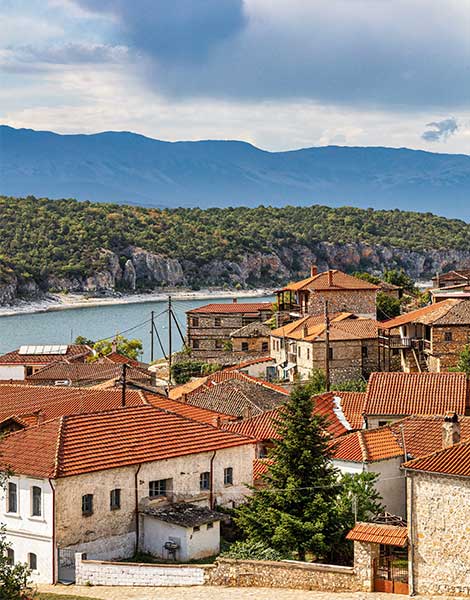
© Perikles Merakos

© Perikles Merakos
Historical Legacy
Prespes is about more than birds and plants. It is also very much about history, architecture, and the traces of its long and storied past. Through the centuries, it remained a meeting place of cultures; there are traces everywhere of its historical legacy, from the Byzantine era, the many military conflicts in the Balkans, and the bloody 20th-century Greek Civil War, making the region even more fascinating.
The spiritual importance of the area over the years is reflected in the 10th-century Basilica of Aghios Achillios on the tiny island of the same name in Mikri Prespa Lake, connected to the shore by a floating bridge; the famous Byzantine hermitages on the southern shore of Megali Prespa; and churches dating to the 11th and the 16th century at Aghios Germanos and Platy respectively. These structures also testify to the historical significance of the region. The Basilica of Aghios Achillios is the burial place of Tsar Samuel, one of the most renowned Bulgarian rulers. Historians believe he planned to make the islet the capital of the Bulgarian state that he envisioned after his attempted secession from the Byzantine Empire. Dying from his wounds after his army was crushed by Byzantine forces, he was buried there in 1014 without having realized his plans. On the islet of Aghios Achillios, beneath the ruins of the church, human remains were found, along with the shroud in which Samuel’s body is believed to have been wrapped, which is why Prespes today is also an important site and a pilgrimage destination for many Bulgarians.
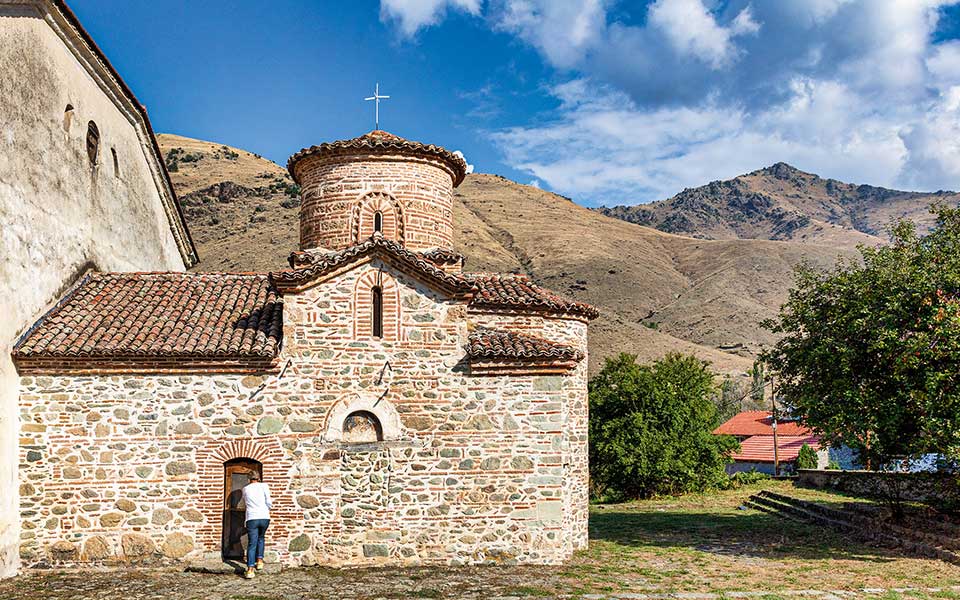
© Perikles Merakos
A short distance away in the village of Psarades, traditional lake boats (plaves) take visitors to hermitages where Orthodox Christian monks from across the vast Byzantine territories once sheltered. In some of these rocky caves where anchorites made their homes, rare religious frescoes have survived, offering visitors glimpses of a splendor born of faith.
The inhabitants of the Prespes Lakes region have come to realize that the historical events that plagued their land and brought pain, blood and tears, have also left a legacy that can serve as a tourism product. The Greek Civil War (1947-1949) inflicted deep wounds in the region, where the long-simmering historical conflict over the Macedonian Question inflamed passions even more and made the divide even bigger. Some of the few residents left in these half-ruined villages can clearly remember those difficult times. Some have relatives who sought refuge in Eastern Bloc countries, some out of necessity, others by choice. Most never returned.
There are locations here where events took place that marked not only the region but the country in general. The inhabitants now wish to draw on this historical memory for tourism development and promotion, in much the same way that many other countries invest in “war tourism.” Today, local sites worth visiting include among trenches, pillboxes, a cave used as an improvised hospital by communist troops during the Civil War outside the village of Vrontero, and a cave near the village of Pyli which served as the Civil War headquarters of Nikos Zachariadis, General Secretary of the Communist Party of Greece. Locals are also planning to highlight the route of the “Great Maneuver,” a spectaular move used by the communist guerilla forces (and still studied today at military academies) that took their forces in just one night from the Grammos to the Vitsi and Prespes mountains, where they set up their new headquarters.
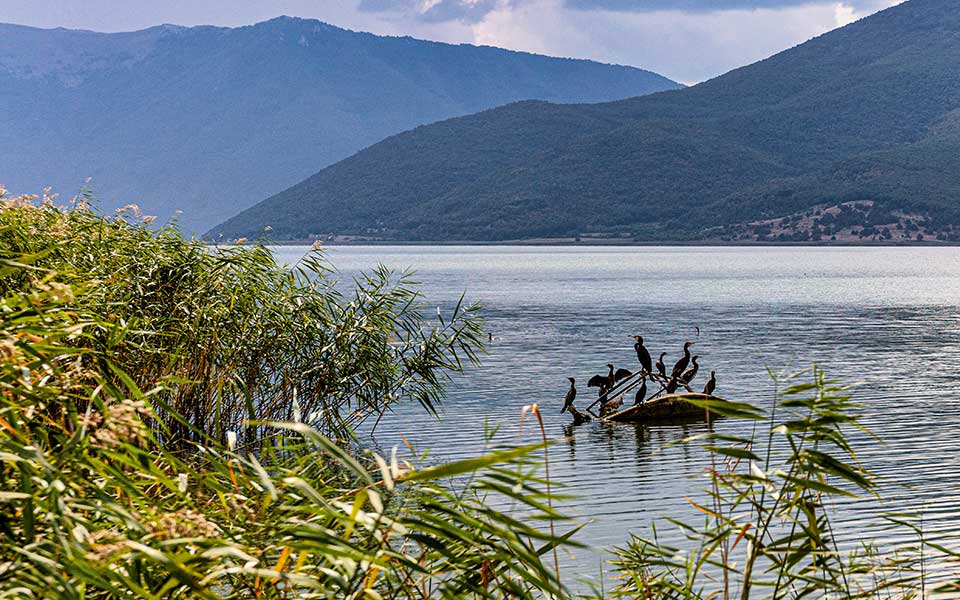
© Perikles Merakos
Mud mansions
The villages of Prespes and the wider region are noted for their distinctive local architecture. Some houses are built from wood, earth and reeds, while others are from stone. Two villages in the heart of Prespes, Aghios Germanos, and Psarades, are protected historical preservation sites. The village of Mikrolimni, meanwhile, on the shore of Mikri Prespa is blessed with natural beauty.
At 22 km from Kastoria, the rural road to Florina enters the verdant Korestia Valley. This is one way to reach the Prespes basin; the other is from Florina via the Vigla Pass. Both stunning routes go through verdant forested slopes and ravines with beech and chestnut trees, which in spring turn green, in autumn take on a gorgeous pinkish-red color, and in winter are covered with snow.
If you’re heading north on the Kastoria-Florina road, Mt Vitsi rises into the sky to the right, and to the left is the Mali-Madi range, mountains where some of the most tragic pages in modern Greek history were written. In in their shadow stand seven mud-brick settlements, seven ghost villages known as “villages of oblivion.” Before the war, they were home to over 5,000 people, most of whom were bean farmers, grwoing the noted local bean. Economic hardship drove some to emigrate to Canada, the US and Australia, while others turned to the Eastern Bloc, choosing instead Yugoslavia, Hungary, Czechoslovakia and other countries. It is doubtful whether even two or three souls remain in the ruined settlements today. If these deserted houses could speak, each would have its own story, and all would cry out for people. Today, they’re home only to owls, while bears can often be seen roaming in the streets outside.
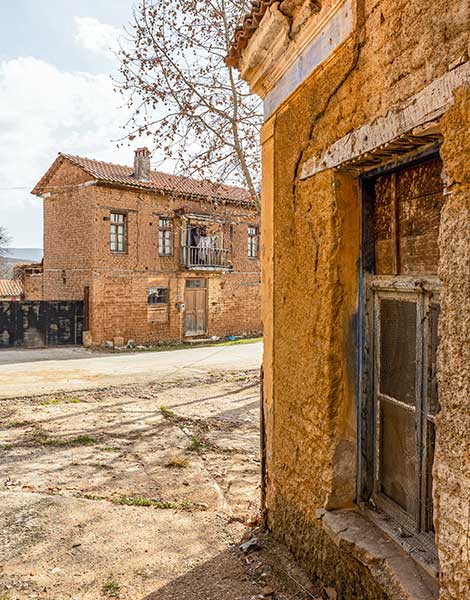
© Athanasios Gioumpasis/Getty Images/Ideal Image
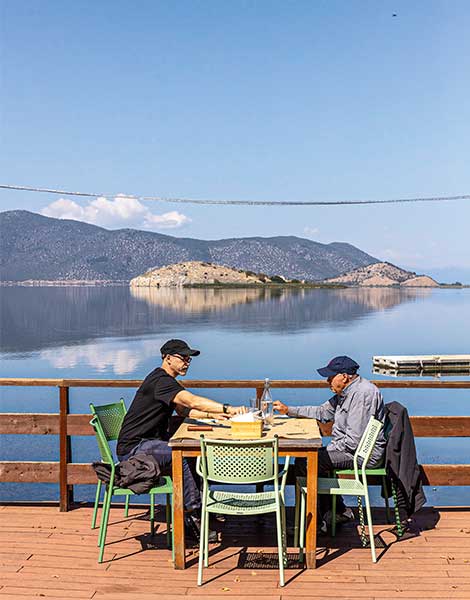
But although the old mud-brick houses, or “mud mansions,” have been abandoned to the ravages of time, they still have impressive characteristics. “All these houses have been built with mud bricks,” says retired teacher Vasilis Christidis, who lives further down in Neos Ikismos and is calling for some of the villages to be granted traditional settlement status. “The roofs were thatched with rye straw, one of the longest types. Thatchers would cut it with a sickle, remove the grain, and lay it expertly on the roof. They didn’t replace straw; instead, they placed more straw on top. This type of roof provided excellent insulation and helped keep the village camouflaged in a sense, safe from prying eyes. Housewalls, too, built with reddish mud bricks, were the same color as the earth, and wouldn’t stand out from a distance.”
Celebrated film directors such as Theo Angelopoulos, Pantelis Voulgaris and others have used these settlements for scenes in their most important movies, including The Suspended Step of the Stork, The Travelling Players, and Deep Soul. Scientists from around Europe have also visited the area to study the architecture of the “red houses.”
Looking forward
Today, the Prespes region is establishing itself on Greece’s tourist map even as it works to build bridges with neighboring communities in Albania and North Macedonia. Their wetland has been designated a “Balkan Park,” and the three countries are planning its joint protection and promotion. Work is already underway to open a border post that will connect the region with the major tourist center of Ochrid in North Macedonia, and the same is expected to happen with Albania. Every August for the past 35 years, the Balkan Festival has been held with great success on Aghios Achillios Island, which, due to the participation of artists and others from all over the Balkans, has become something of a “Cultural Davos” for the Balkan nations. Acclaimed artists, including Goran Bregović, Mikis Theodorakis, Irene Papas and Manos Hadjidakis, have honored the events with their presence, and the festival has, from time to time, also hosted meetings of political leaders from the surrounding countries.

